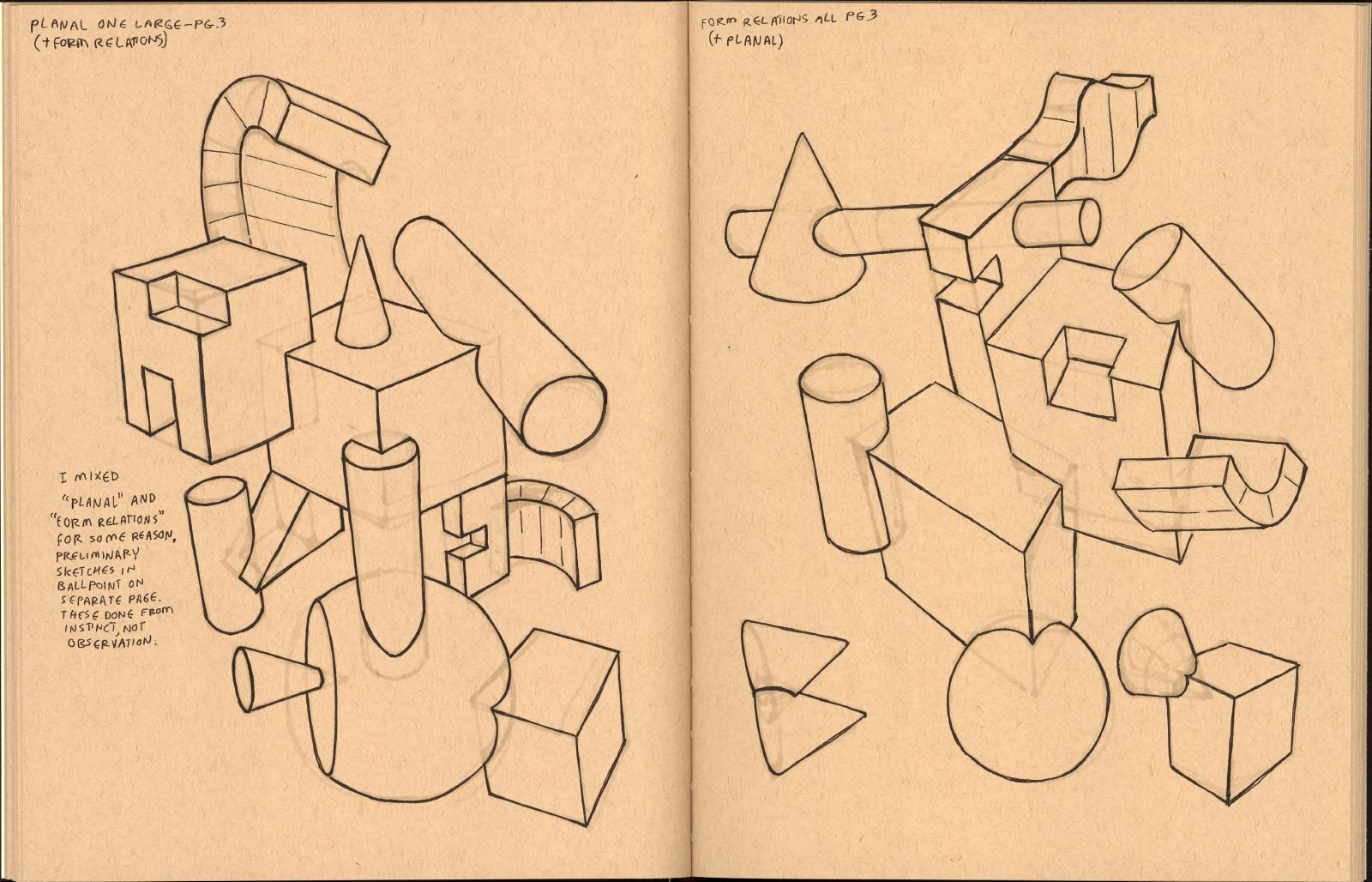#49 - As An Artist, Do Anything You Like, Follow Your Muse, Do Not Get Stuck Doing Things That Bore You
The benefits of doing many different things.Warm-Up Drawing Exercises

Sketchbook pages of my doing Peter Han's excellent Dynamic Sketching course.
This week, I will argue that you should consider doing many different things instead and not stick to doing one thing.
The book “REFUSE to CHOOSE!” by Barbara Sher was a feast of recognition for me and probably for everyone who finds themselves constantly starting new projects and never finishing them.
(By the way, reading books is a far better use of your time than going on social media. Trust me.)
I will enthusiastically lunge off into some project, only to stop it eventually and lunge off in another direction in pursuit of that next Shiny Object. And I’ll feel guilty about abandoning the project.
Here’s the way Barbara Sher frames it: consider bees. They fly from one flower to the next, and they suck the nectar out of the flower, then leave and go to the next flower.
Because they got what they wanted from the flower!
And that’s the crux of it. The bees got what they wanted from the flower, and now they move to the next flower.
You can see our creative endeavors in that light: what do we want to get from our project? And if we abandon them, is that perhaps because we got what we wanted from them? Are we like a bee, moving on to the next flower—or project?
She makes you write down all the exciting projects you think of in a notebook, or, in our case, a sketchbook, maybe? And she makes you write down when you stopped working on it and why because that hints at what you were getting from it.
She has coached many people, and she explains that different people have different things they want to get out of their multitude of projects.
For me, it is always curiosity. I want to figure out how other people do things. How did J.C Coll do that cross-hatching? How do people grow social media accounts? That is the nectar I want from these flowers. That is what I want from these projects. I want to understand how other people pull something off.
And then, when I get that reward, when I figure it out, when I understand, I lose interest. The flower has no nectar for me anymore. And I move on to the next.
You can make a case that we DO finish our projects because we got what we wanted from them! It’s just not “finished” according to the definition of others. But do we keep doing the same thing, over and over?
When acquiring a skill, there are, I believe, five stages:
1) You don’t know, but you also don’t know you don’t know, and you enthusiastically lunge off in the wrong direction. You need to be guided and micro-managed by a mentor.
2) You slammed against a wall, things went wrong, and you still don’t know, but now you know you don’t know.
3) You keep trying, keep figuring out, and eventually, you do know, but insecure, you just don’t know it yet.
4) You’ve done it successfully a few times now. You don’t need guidance anymore. You know it, and the people around you know it. You are good at what you do, know it, and enjoy it.
5) You’ve done it so many times that you’re doing it on auto-pilot. You are bored and not enjoying yourself anymore.
And at that fifth stage, it becomes time to try new, exciting things. I can promise you this: it will feel like a weight lifted off your shoulder as you can breathe again creatively! You get SO much energy from doing new things!
By the way, you don’t have to abandon a project. You can just postpone it and file it away to work on again in the future.
There is also the concept of Sunk Cost Fallacy: that you keep working on something because you already invested so much time in something. But maybe it can be time to let go of a project you already spent a lot of time on if other project ideas excite you more. Or at least postpone it, put it away to work on again in the future, when you are excited about it again.
Last week, I argued that you should focus on doing one thing. This week, I passionately argued the opposite: do many things! Jump from one to the next! Which fits you best?